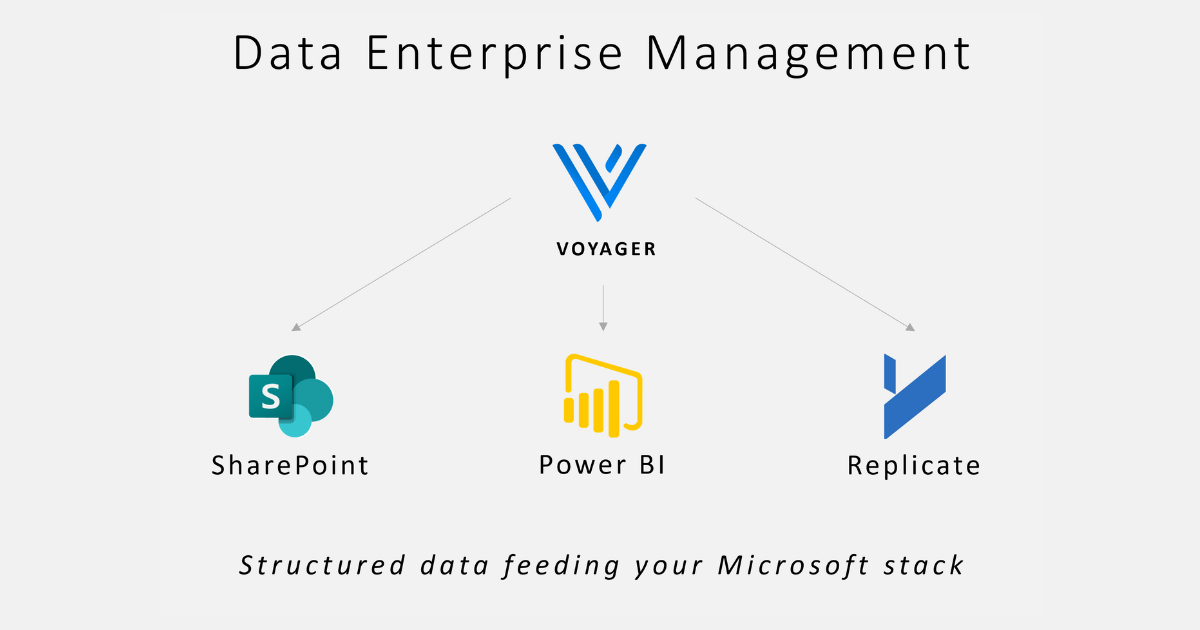Smart Strategies to Manage Enterprise Documents and Leverage Data

CRE owners and managers know that document management is challenging. An ever-growing volume of documents across an organization demands solutions that not only provide centralized access but also drill deep into the details of leases, rent histories and other property-level information while providing ease of use. And with the advent of AI and its clear business case for CRE, there are new opportunities to make smarter decisions and work more nimbly than ever. You can achieve new levels of efficiency with strategies that combine intelligent real estate software with everyday business tools. Read on for some key tips from our recent white paper.
Simplifying enterprise document management and using tools you already have
Combining a leading real estate-focused system with a familiar partner enables users to enjoy the capabilities each provider brings to the table. For example, combining Yardi Voyager with Microsoft tools. In creating Yardi Document Management for SharePoint, Yardi leveraged Microsoft SharePoint® software, which Yardi clients have access to through Microsoft 365®. Yardi’s system uses SharePoint online for the document repository (or Yardi application storage). As a result, clients can take advantage of all the features in SharePoint along with the implicit and explicit structure of Yardi tools. Integrating the two powerful solutions provides automated document storage along with a portable folder structure that eliminates tedious processes.
Moving big data and enhancing reporting and analysis
Companies with large amounts of data often need to move it from repositories to other end points, which may include data warehouses or data lakes such as Snowflake, AWS and Azure. A common routine task is to combine data from one source with other data from reports and analyses, then leverage third-party tools to analyze and report on the data.
Among the tools devised for such tasks is Yardi Replicate, so named because it replicates Voyager data to a separate endpoint. It’s been somewhat challenging for our clients to move the amount of data Yardi’s system holds, which is millions and millions of records. Replicate efficiently enables movement of data from Voyager to other cloud environments, while sidestepping performance issues often associated with moving large volumes of data. The tool uses Change Data Capture (CDC), a Microsoft SQL technology that tracks all changes in a data source. Once tables are mirrored, CDC looks solely for changes and will move only records that have been changed.
Building a bridge to intelligence
Real estate enterprises are accumulating an ever-growing storehouse of data about properties, leases, occupancy, rent growth and more. A key benefit of the aggregated information is its potential to help forecast the likelihood of tenant lease defaults or expansion. To gain that advantage, data must be moved from multiple sources to a format that can be loaded into business intelligence tools, which opens up a huge opportunity to slice and dice data in a way that powers company strategy. Such tools not only provide a pipeline for moving usable data to business intelligence but can also create pipelines for tailored customer reports and dashboards.
As with document management, the best approach may be to partner dedicated property management technology with a business intelligence tool that is readily accessible and familiar to real estate professionals. That was the strategy when Yardi developed Yardi Data Connect to enable data transfer between Voyager and Microsoft’s Power BI® tool. Power BI has shown an exceptional capacity to visualize data and aggregate it from multiple systems. In addition, Yardi has created a “starter pack” that allows Data Connect clients to hit the ground running with a stream of data, reports and visualizations recommended by Yardi. The solution enables users to create their own data pipelines to any additional information they want to include, then load that data directly into Power BI to build tailored customer reports and dashboards to create visualizations never before possible.
One forward-thinking Yardi client using Data Connect, Power BI and Azure ML, has begun deploying AI models to work through a mix of data that includes occupancy trends, financials and data marts. For example, the company can pull in information from for-sale properties and abstract it into a data set. Then it can come up with deals, offers and results, both from historical deals and the company’s operational results. The data is placed into the Azure ML model, which can assess potential deals and come up with a score for the probability that it’s worth a look.
The implications of using these combined tools are profound. Once companies have exfiltrated the data, they’ve created a huge opportunity for analysis. A tremendous area of focus now is in using next-generation tools, large language models, generative AI and machine learning in order to dramatically enhance user experience and the capabilities of software solutions such as those offered by Yardi.
This Week’s Sponsor
Yardi® develops and supports industry-leading investment and property management software for all types and sizes of real estate companies. Established in 1984, Yardi is based in Santa Barbara, Calif., and serves clients worldwide. For more information on how Yardi is Energized for Tomorrow, visit yardi.com.
Read Next
 5/15/2025
5/15/2025
Tech, Talent and Transformation: 2025 Digie Finalists Announced For 27 years, Realcomm has presented the Digie Awards to acknowledge companies, real estate projects, technologies, and individuals that have advanced the commercial real estate industry through the strategic use of technology, automation, and innovation.
 5/15/2025
5/15/2025
Empowering Space Management with Data-Driven Visualization For effective CRE space management, it’s critical to centralize lease data, maximize rental square footage (RSF), improve energy efficiency and reconfigure spaces to meet changing needs.
 5/8/2025
5/8/2025
The AI-Powered Workplace Evolution: Redefining the Business Landscape In today's rapidly evolving business environment, the fusion of Artificial Intelligence (AI) and Workplace Management is revolutionizing the way organizations approach workspace optimization and operational efficiency.
 3/27/2025
3/27/2025
The Convergence of Edge Computing, Cloud, and AI in Building Automation and Smart Buildings In the built environment, we have seen the convergence of Operational Technology (OT) and Information Technology (IT), later expanding to include Workplace Technologies (WP).





%20(1)%20(1)%20(1).png)





